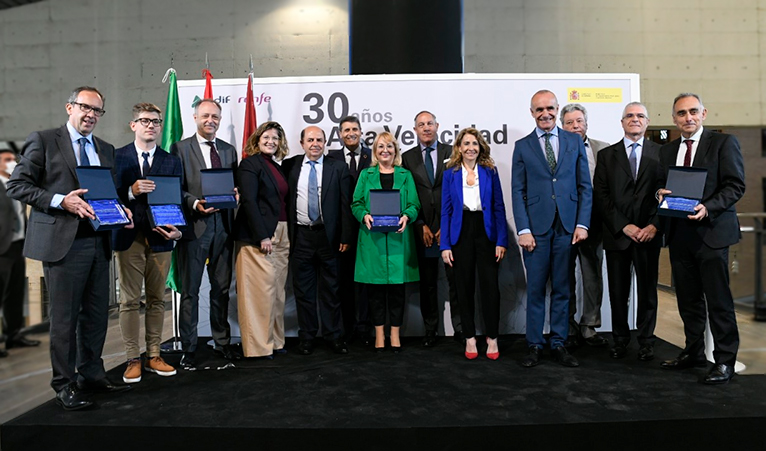In 2022, the Spanish high-speed rail network will reach 4,000 kilometres in length, consolidating Spain’s world leadership in the development of this model of sustainable mobility and making the country the longest high performing network in operation in Europe and second in the world after China.
|
|
(23/05/2022)
Three decades after the first high-speed 470.5 kilometres-long railway line ran its first commercial service between Madrid and Seville, the network has multiplied almost by eight, with accumulated investments exceeding 57,200 million Euros.
The technical and commercial success of the Madrid-Seville high-speed line –the greatest railway engineering project carried out in Spain until then− drove the development of more lines and consolidated the attributes that define today’s high speed: the transport of the future and the core of a sustainable, safe, integrating and smart mobility.
Three decades after the commissioning of the first kilometres of high speed in Spain, Adif faces the challenge of the liberalization of the network to extend its use and consolidate the train as the first mode of transport in Spain.
Innovation, sustainability and connectivity
The construction of the first high-speed line in 1992 started an unprecedented transformation of the railway, both technologically and industrially. This process has allowed Spain to change from being an importer to an exporter of technology and know-how that are nowadays applied by countries all over the world.
High speed was also pioneering in the field of sustainability, consolidating the respect for the environment as a basic pillar. The construction of this infrastructure included preventive and corrective measures of environmental impact before having regulations, as well as advanced technologies for environmental control and surveillance. Sustainability also gets to traffic thanks to a network free of greenhouse gas emissions powered by electricity generated by renewable sources.
The innovation applied in high speed transformed the concepts of maintenance, traffic and connectivity, too. The new railway service involved having the telephone aboard the train and the introduction of fibre optics for communications. Maintenance has incorporated a predictive vision, while Centralized Traffic Control (CTC) Systems provide an intelligent and integrated management of railway traffic control systems.
Nowadays, these systems allow 360 high-speed trains to run on this railway infrastructure every day, compared to the 12 daily trains with which the Madrid-Seville line operation began. The commissioning of this line, built in standard gauge, also meant the first step to a greater integration with the rest of the European railway infrastructure, the interoperability.

|

